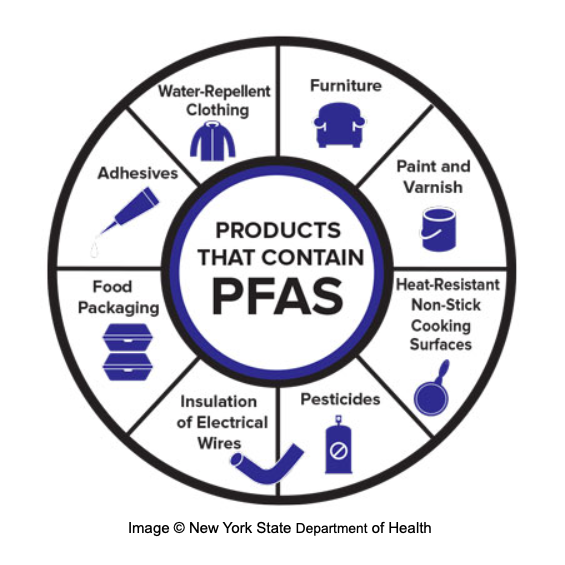Per- and polyfluoroalkyl substances (PFAS) are a hot topic in the environmental sector given their widely anticipated regulation at the federal level due to the toxicity and persistence in the environment for a subset of these chemicals. PFAS are a group of thousands of manmade chemicals commonly used in the manufacture of various consumer and industrial products since the 1940s. Specifically, there are several sources of PFAS identified by the USEPA to be aware of including, but not limited to: plating operations; manufacturers of coatings, paints, textiles, electronics, photographic film; firefighting foams; nonstick (Teflon™) coatings; stain and water-resistant clothing or other products; certain soaps and detergents used in car washes or other applications; food packaging (i.e., popcorn bags, fast food wrappers, etc.); auto scrap and salvage yards; landfills; paper mills; and wastewater treatment plants. Various studies have shown that PFAS consumption has been linked to adverse effects in humans. Additionally, PFAS are persistent chemicals that do not readily breakdown and can accumulate over time, which is why they are often referred to as “forever” chemicals.
In late 2021, USEPA issued its “Strategic Roadmap” document which served as a call to arms by federal agencies to investigate and evaluate the regulation of PFAS compounds over the next several years. Currently, there are no federal regulations established for PFAS; however, on March 14, 2023, the current Administration announced its proposal to establish the first-ever national drinking water standard for six PFAS substances. If the proposed regulation is finalized, the standards become legally enforceable and will require public water systems to monitor for these chemicals and notify the public if levels exceed the proposed regulatory standards. It was reported that this proposed regulation is expected to be finalized by the end of 2023.
Certain states (e.g., California, Michigan, New York, etc.) have already passed their own regulations for specific PFAS compounds, such as perfluorooctanoic acid (PFOA) and perfluorooctane sulfonic acid (PFOS). The recently-proposed federal regulation includes enforceable standards for PFOA and PFOS which have been set at 4.0 parts per trillion. In addition to this very recent development, the USEPA previously proposed to designate PFOA and PFOS as “hazardous substances” under the Comprehensive Environmental Response, Compensation, and Liability Act (CERCLA), commonly known as Superfund, in September 2022, and if finalized, this action will necessarily require that PFAS compounds be considered as potential environmental concerns in future Phase I Environmental Site Assessments (ESAs). If so, PFAS will have to be evaluated like any other petroleum/hazardous substance even though they are much less well understood and related to a wide variety of industries/operations. It is expected that this will result in an increased number of properties being identified with PFAS-related “Recognized Environmental Conditions” (RECs) given the requirements consultants are obligated to comply with under the new ASTM Phase I ESA standard for “All Appropriate Inquiry” (AAI) which went into effect on February 13, 2023.
Knowing that PFAS regulations are forthcoming, it is important to consider if PFAS may be a concern for your property, facility operations, or next property transaction. Pioneer Engineering & Environmental Services, LLC has successfully completed PFAS due diligence investigations at multiple sites and will continue to follow the shifting regulatory landscape for PFAS in order to best serve our clients.


